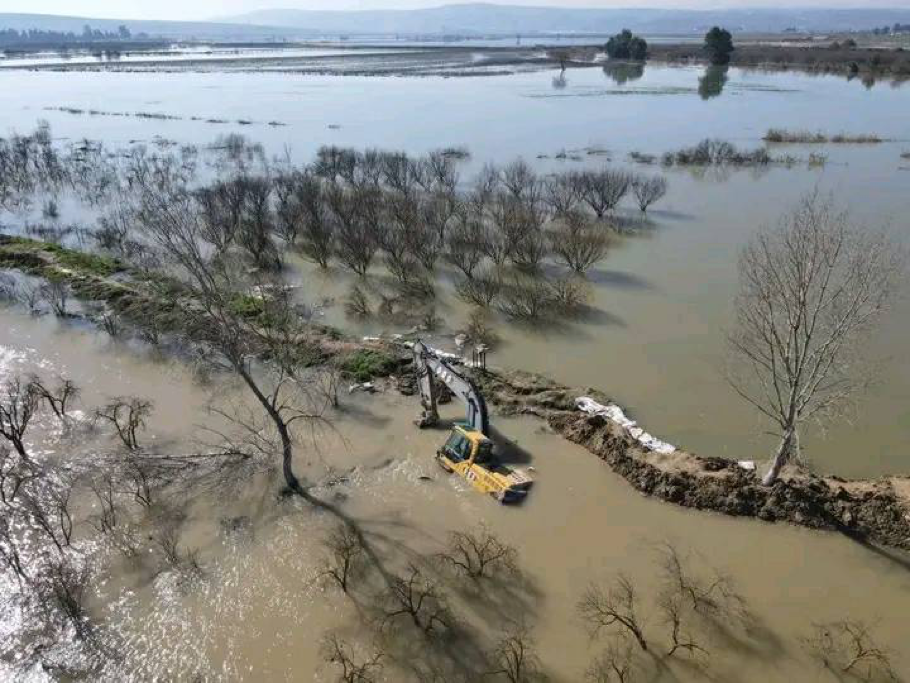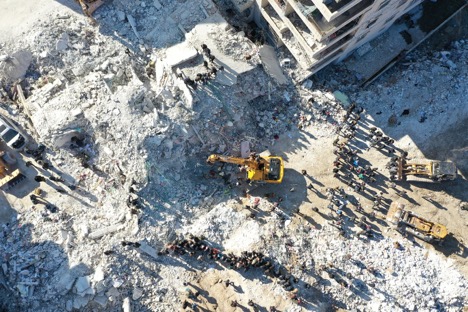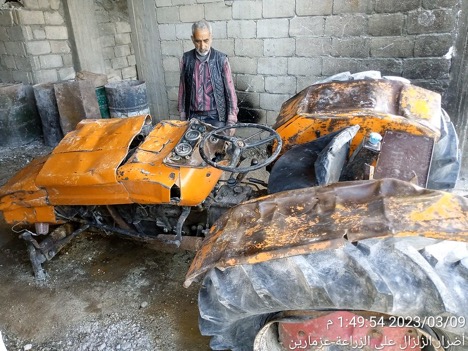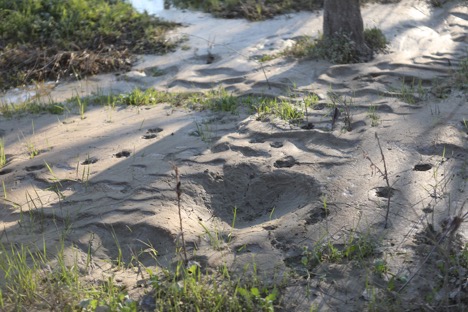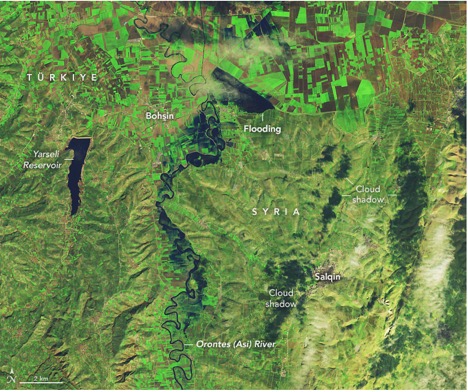This article is part of a dossier in partnership between SyriaUntold and Orient XXI, exploring the consequences of the devastating earthquake that struck Turkey and Syria in February 2023.
On February 6th, Syria was struck by two devastating earthquakes, becoming a part of a trifecta of calamities in the northwestern region of the country. This combination of earthquakes and floods has further added to the burden faced by its people, who have been enduring the consequences of a prolonged war for over a decade. The earthquake inflicted not only immediate devastation on people and infrastructure but also significant harm to the environment. As the dust settled and the ground stilled, concerns emerged about the long-term consequences for both the health and well-being of the people and the delicate ecological balance in the affected areas. Beyond the visible destruction, the environmental damage adds an additional layer of urgency to the recovery efforts required in the aftermath of this natural disaster. In this article, we delve into the profound environmental effects of the earthquake in Syria, shedding light on the challenges and implications for the region's environmental recovery and the well-being of its inhabitants.
Breathing Amidst Ruins: Navigating Airborne Hazards Infused within Earthquake Rubble
In March 2023, the World Bank released a report revealing the extensive damage caused by the earthquake in Syria. According to the report, an estimated 122,054 buildings have been damaged, while 10,629 buildings have been completely destroyed. This accounts for approximately 8.4 percent of the total housing stock in the affected areas. The magnitude of destruction has resulted in the accumulation of a staggering 58 tons of rubble. The governorates of Aleppo, Idlib, and Hama have been particularly hard-hit, experiencing significant damage to housing structures. As a consequence, these regions now face the daunting task of managing and cleaning up substantial amounts of rubble. The clean-up efforts in these areas have proven to be both challenging and costly.
The accumulation of rubble raises significant concerns regarding its impact on environmental health and safety. The earthquake has added to the already existing rubble problem resulting from the prolonged years of war in Syria. It is crucial to address the presence of hazardous materials like heavy metals, cement, mold within the rubble to ensure the well-being of the affected population. Of particular concern is the potential presence of asbestos -especially in Aleppo where a big number of old building has collapsed- a toxic substance that has been banned in 63 countries. There is substantial evidence linking asbestos exposure to serious health risks, including the development of mesothelioma and cancers affecting the lungs, larynx, and ovaries.
Toxic building debris poses health risks not only to humans but also to the surrounding ecosystems. It can contaminate soil and water through leaching and runoff, harming plant growth and aquatic habitats. Proper handling and disposal are crucial to mitigate exposure, protect public health, and preserve the environment. Effective monitoring and remediation efforts are necessary to prevent long-term contamination and support restoration.
Given the potential dangers associated with hazardous materials in the rubble, it is imperative to take necessary precautions and implement effective measures to safeguard the affected communities. These measures should include comprehensive strategies for managing and disposing of the rubble in a manner that minimizes the risk of exposure to hazardous materials. This will require close coordination between relevant authorities, environmental experts, and humanitarian organizations to ensure the safety and well-being of the population affected by the earthquake.
Straining an Already Desperate Situation: The Earthquake's Toll on Syria's Water Crisis
In Aleppo, the essential parts of the infrastructure suffered direct damage, reducing the efficiency of the water system and increasing the risk of contaminated water polluting the supply. Additionally, the earthquake destroyed many water tanks located on rooftops, which added more pressure to the already strained system. Finally, parts of the city's sewage system, which was already heavily damaged during the conflict, collapsed, making the situation even worse in a region that has been struggling with the effects of more than ten years of conflict.
In Idleb the earthquake's impact on water stations and sewage networks has had severe consequences on the water and sanitation system in the region. This has led to an alarming increase in the risk of waterborne diseases. This appears particularly concerning as north-west Syria is already facing a cholera outbreak, with over 60,000 suspected cases. This number is expected to rise due to already existing significant gaps in water, sanitation, and hygiene services.
The sense of grief and loss at the destruction of one’s home
01 August 2023
The Arts of the Earthquake
11 August 2023
In Latakia and Aleppo, NGOs and governmental organizations that we interviewed for this report said that residents of the cities also experienced a change in the color of their drinking water. Following the earthquake, the water became murky and remained so for 15 days. As a result, people had to purchase water, further burdening them in the midst of economic hardships caused by the war. Fortunately, the water eventually returned to its normal state, and no repairs to the water systems were necessary. It is likely that the water became mixed with sediments due to the earthquake, and it took a few weeks for the sediments to settle. Residents in Idleb also reported that during the initial days of the earthquake, there were changes in the physical properties of drinking water caused by the collapse of some dust within the artesian wells. However, continuous pumping of water for several hours eventually restored the water's physical properties to their normal state.
The dire conditions within shelters, particularly in Aleppo and Hama, have left people vulnerable to infectious diseases due to inadequate sanitation facilities and limited access to clean water. Contamination has been predominantly observed in jerry cans and water tanks, significantly increasing the risk of water-borne diseases.
In the case of Latakia, where people sought refuge in mosques and schools, the facilities were ill-equipped to handle the large number of individuals seeking shelter. This resulted in a sanitary crisis, as the limited number of bathrooms and restricted access to clean water in schools exacerbated the already challenging situation.
The lack of proper sanitation and clean water within shelters poses a significant health risk. It increases the likelihood of water-borne diseases spreading rapidly among the vulnerable population. Without access to clean water for drinking, cooking, and personal hygiene, individuals are at a heightened risk of contracting illnesses, such as cholera, hepatitis A, and other water-related infections.
Agricultural Damage from Earthquake and Floods: Uncovering the Consequences
The earthquake in Syria has had a profound impact on the agricultural sector, which serves as a crucial source of livelihood for many communities. According to a report by the Food and Agriculture Organization (FAO), the damages inflicted by the earthquake were substantial.
The FAO report, based on 190 interviews (including community leaders and experts) conducted in agricultural villages, revealed varying degrees of damage across different subdistricts. Atareb, Bulbul, and Idleb experienced relatively less damage, while Al Bab, Ar-Ra'ee, Dana, Harim, Jarablus, Salqin, and Suran were severely affected.
The earthquake had significant repercussions on winter crops, orchards, and agricultural land. Direct damage to the land and trees, impaired irrigation systems, and limited access to inputs and labor all contributed to these adverse effects. As a result, over 80 percent of respondents anticipated a decrease in crop and orchard production for the current season. Livestock also suffered greatly, with reports of animal deaths and injuries, although mostly minor. These losses imposed a significant economic burden on farmers, who not only had to replace the deceased animals but also had to cope with reduced production from surviving livestock.
The earthquake worsened existing challenges in accessing agricultural inputs, including disrupted imports and poor-quality alternatives. Water scarcity intensified, particularly in relation to irrigation and groundwater wells. Financial losses were significant, affecting 40% of households, despite higher product prices. Access to food declined due to higher prices, reduced financial capacity, and limited availability. Crop farmers urgently require fertilizers, plant protection inputs, irrigation, seeds, and energy. Livestock farmers need animal feed, livestock health inputs, services, and financial aid. Supporting restoration for agricultural sector recovery, resilience, livelihood restoration, and ensuring food security in earthquake-affected areas.
A video was shared on social media by a farmer in the northwest in the aftermath of the earthquake showing the formation of holes and sand boils in the agricultural lands. These holes indicate to the occurrence of soil liquefaction—a phenomenon in which saturated soil temporarily loses its strength and behaves like a liquid due to the intense shaking during an earthquake. Soil liquefaction can have detrimental effects on agricultural productivity and infrastructure. The destabilization of the soil hampers its ability to support plant growth, compromising the livelihoods of farmers who heavily rely on these lands for crop cultivation and livestock grazing.
Additionally, the earthquake led to floods along the Orontes River, causing further damage to vast agricultural lands in northwestern Syria. Villages in the Idlib countryside, including al-Tloul, al-Jisr al-Maksour, al-Mushrafiya, al-Alani, Jakara, Dalbiya, al-Hamziya, al-Hamra, and Betiya, were severely impacted by the overflow of the river, resulting from the collapse of a dam in northwestern Syria.
NASA observations posted satellite images before and after the collapse of the dam, showcasing its impact on the neighboring villages.
Environmental recovery: future insights
To facilitate the recovery from the earthquake's environmental impacts in Syria, crucial steps include managing and disposing of rubble safely, addressing hazardous material exposure, restoring water infrastructure to mitigate the water crisis, rehabilitating the agricultural sector through support for farmers and sustainable practices, reconstructing damaged infrastructure, providing socio-economic assistance to affected households, and fostering international cooperation for financial resources and expertise. These actions will help rebuild communities, ensure food security, and promote resilience in the face of future challenges.
In an interview with Ali Mohammad, the Director of the Community Resilience Support Program within the Syrian Civil Defense, we gained insights into the current status of the rubble situation in northwestern Syria. “In northwestern Syria, significant efforts have been made to clear the rubble and demolish cracked buildings by the Syrian Civil Defense teams (the White Helmets),” Mohammad told Syria Untold. “The goal is to restore the earthquake-affected communities, with a strong focus on rubble removal. Recyclable materials are sorted, and the rubble is reused in agricultural roadbeds and campgrounds to enhance their stability and resistance to weather during the winter. These measures aim at preventing the spread of epidemics and harmful insects in populated areas before the summer arrives. Additionally, walls and buildings containing hazardous materials are also being removed and demolished to ensure the safety of civilians.”
Mohammad also stressed that “environmental challenges and issues can be likened to a Rubik's Cube, requiring a lot of concerted efforts between individuals, communities, institutions, and the state to look at them as a holistic approach and optimal solutions according to the available natural resources and resources.”
Furthermore, the FAO produced a rapid assessment of the earthquake damage and has commenced assistance to rural communities in restoring food production and agricultural livelihoods. Their plan includes providing farming inputs, veterinary care, and unconditional cash transfers. At present, the FAO is supporting 17,880 rural families through various aid measures in Aleppo, Lattakia, and Hama. These combined efforts aim to rebuild and revitalize the affected regions, promoting sustainable recovery and well-being for the local populations.


